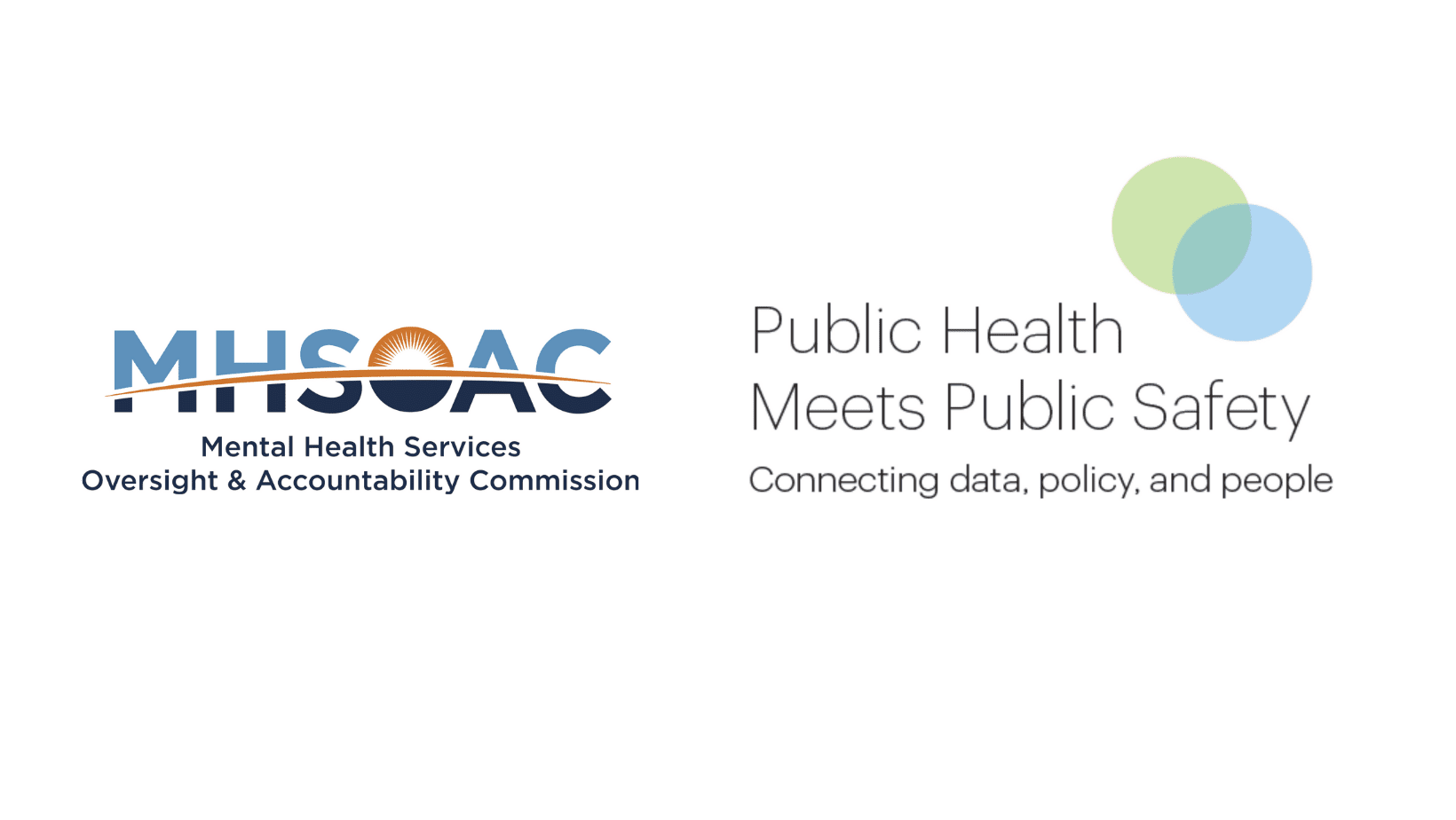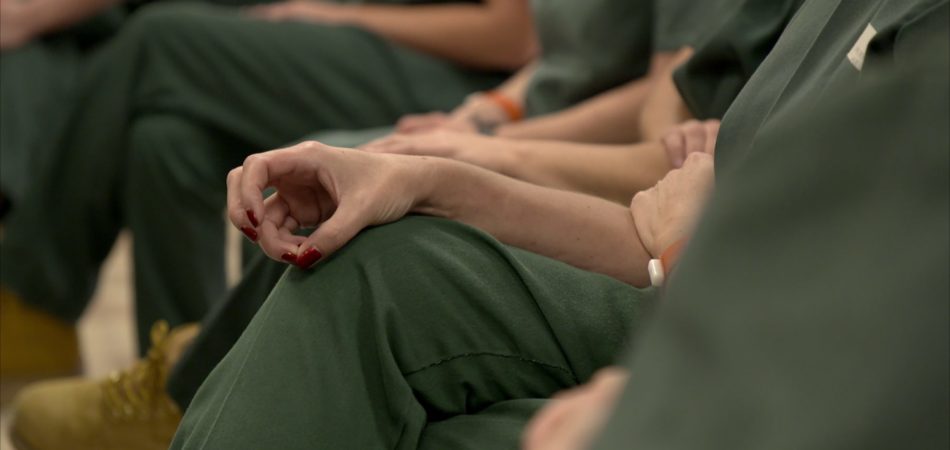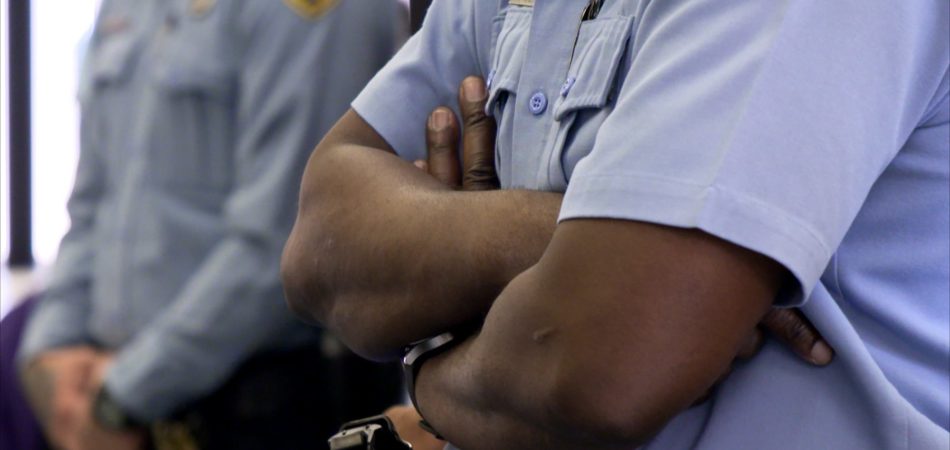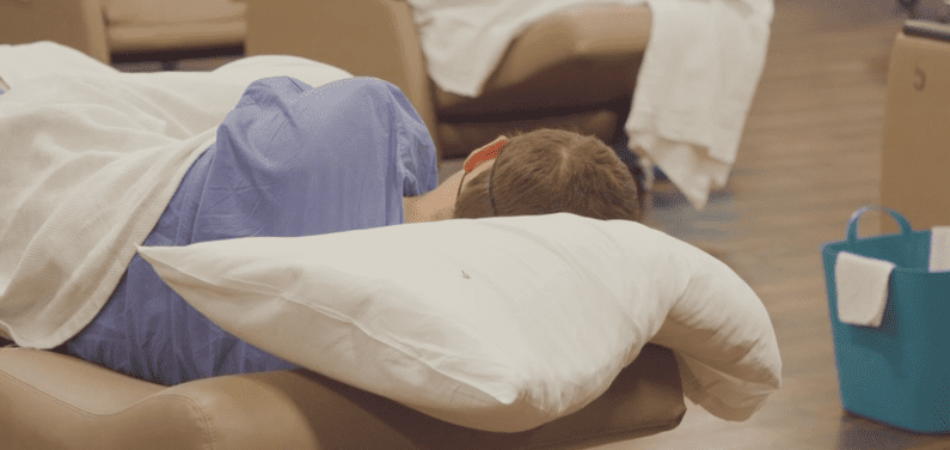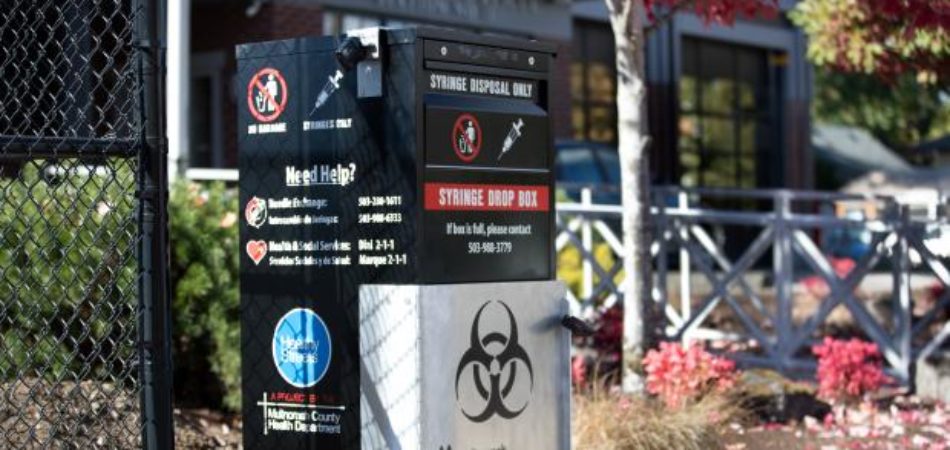
Public Health Meets Public Safety:
A Vision for People-Centered Policymaking to Reduce the Number of People with Behavioral Health Needs in the California Criminal Justice System
59,666
Average daily population (ADP) in California’s jails in 2020
36%
Percentage of annual ADP that are “open mental health cases”
21,418
Open mental health cases on average in 2020
Data from Jail Profile Survey, Board of State and Community Corrections
People with mental illnesses and substance use disorders (“behavioral health needs”) should not be imprisoned because of their illnesses. But despite creative policy initiatives significant government investments, and good intentions, roughly half the people in California jails on any given day—and a third of the people in California prisons—have mental illnesses.
What went wrong? And what do we do to fix it?
How can our California community—from policymakers to mental health counselors to legislators to family members of justice-impacted people—come together to ensure that people with behavioral health needs receive the care they need to stay safe, healthy, and prosperous in their communities?
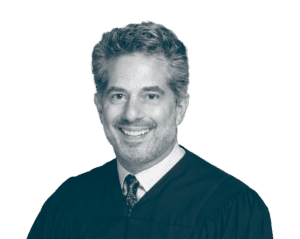
We have normalized jail as treatment facilities.
Judge James BiancoLA County

Jail is the bed that never says “No!” When people cannot access the appropriate level of care that they need, there are five outcomes: they end up in jail or prison, a state hospital, homelessness, and victimization, or, unfortunately, too often death.
Mark GaleNational Alliance on Mental Illness-LA
Our Approach
Policymakers have long worked to reduce the incarceration of people with behavioral health needs. Numerous state entities have studied the issue and written thoughtful policy reports. Rather than redo what has already been done by identifying what is broken, we adopted a different approach. We focused on the policymaking process itself and how it could be improved from the perspectives of state and local policymakers, practitioners, and people with direct experience navigating mental illness and substance use disorders and California’s criminal justice system.
To that end, our team set out in the spring of 2021 to connect with people who have deep knowledge of criminal justice and behavioral health services in California. We sought to center the viewpoints of experts with firsthand knowledge of the state’s criminal justice, mental health, and policymaking landscape. Staff from the Mental Health Services Oversight and Accountability Commission, Council on Criminal Justice and Behavioral Health, California State Association of Counties, California State Sheriffs’ Association, Chief Probation Officers of California, and County Behavioral Health Directors Association of California helped identify experts representing diverse perspectives across the state with a shared interest in improving outcomes at the intersection of criminal justice and behavioral health.
We talked with family members of justice-impacted people, people with lived experiences, sheriffs, prosecutors, probation chiefs, defense attorneys, behavioral health directors, and supervisors. We reached out to Sacramento insiders who worked on this issue from the state legislature, the Department of Finance, and various state agencies and departments. In total, we conducted over 20 interviews with people who collectively had hundreds of years of experience interacting with California’s mental health and justice systems.
Our method—focus groups and one-on-one interviews—allowed us to delve deeply into a variety of ideas and perspectives. However, each conversation began with the same set of questions:
- What do you wish policymakers knew about this issue before adopting new policies or making funding decisions?
- What changes do you think would do the most to reduce the number of people with behavioral health needs who are incarcerated?
Every person we spoke to generously offered their unique perspective, including reflections on how we got here and hopes for a better path forward. And despite the diversity of our conversations, clear themes emerged from the collective.

We can’t keep changing focus every two years.
Mary ButlerRetired Chief Probation Officer, Napa County
II. The Piecemeal Policymaking Problem
One reason we see high jail and prison prevalence numbers is because there isn’t a unified approach to addressing a shared goal.
Numerous federal, state, county, and municipal policies make up the current “policy framework,” and new decisions do not necessarily account for what is already in place. We heard about “shiny new” and “flavor of the month” initiatives. And this happens not just in criminal justice, but in mental health, substance use, housing, homelessness services, education, and workforce development—all areas that need to coordinate at the individual level to help keep people safe and thriving in their communities.
This piecemeal approach cannot and does not center the needs of individuals; nor does it work cumulatively toward measurable outcomes.
We must thoughtfully design a functional, human-centered policy framework, rather than addressing changes in these policy areas piece by piece.
To do this, California requires policies that align funding with the desired outcomes across numerous traditional “systems.”

Our system has been characterized, by critics, as the Winchester Mystery House. But we are getting the outcomes that the system was designed to create. You have to redesign the system if you want different outcomes.
Dawan UtechtBehavioral Health Director, Fresno County
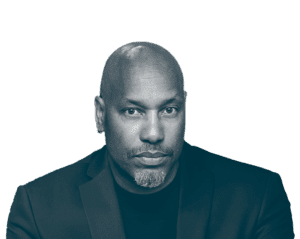
The system is not providing what the person needs—for instance, mitigation of trauma is a necessary strategy.
Percy HowardPresident & CEO, California Institute for Behavioral Health Solutions
III. A Vision for Person-First Policymaking in California
Stakeholders agreed about the importance of a simple, clearly articulated goal for state and local policymakers as well as community members.
Reducing incarceration of people with behavioral health needs is a goal for many, including the Mental Health Services Act and the Council on Criminal Justice and Behavioral Health, in addition to local Stepping Up initiative work.
At the same time, numerous conversations came back to the idea of strengthening communities rather than focusing on “criminal justice” changes. People who had been through the juvenile and criminal justice systems also spoke eloquently about the cumulative “negative” outcomes that are used to describe them: arrest, failure to appear, recidivism, violation of probation.
With this in mind, we propose the following vision to animate future policymaking:
- As a norm, people with behavioral health needs should be able to access care, housing, and a meaningful way to contribute to their communities. Policymaking should aim to position people to be healthy, safe, and prosperous in their communities.
- People with behavioral health needs should be removed from the community only when absolutely necessary. In those instances, policies should focus on smooth, complete reintegration into the community as quickly as possible.
- People should face minimal barriers when navigating different systems. For example, even though Medi-Cal, housing, and treatment are administered by different departments, people should be able to access all three, if needed, with minimal bureaucratic obstacles.
Policies to Strengthen Community-Based Care
The experts interviewed for this study warned against adding to the existing complexity by creating new initiatives or reassigning responsibility without careful consideration.
Here are some questions they recommended asking before enacting new policies or funding decisions:
- Will this decision help align local and state policymakers in embracing shared responsibility for achieving shared outcomes?
- How will this proposed policy make it easier for someone to access services or navigate existing systems?
- Will this policy help build needed capacity, particularly in the community, for treatment and supports, such as housing?
- Will this policy remove existing barriers to accessing community treatment and supports, ideally without creating new ones?
- Will this policy create additional opportunities “upstream” (i.e., as early as possible in a manner that is consistent with people’s wishes and lifestyle) to support people and reduce contact with the criminal justice system?
- Will this policy have any inequitable outcomes when examined by race, language, gender identity, sexual orientation, income, and geography? If so, what can be learned about the causes for these inequities and how to overcome them?

No current efforts to provide treatment are close to the scale we need.
Judge James BiancoLA County

Think about the criminal history and lived experience as an asset.
Tracey WhitneyLA District Attorney’s Office

If you don’t address upstream, there will never be enough money.
Dawan Utecht Behavioral Health Director, Fresno County

Because of privacy law, “behavioral health treatment can become isolating, and it doesn’t need to be that way.
Tracey WhitneyLA District Attorney’s Office

If one sector could solve these complex problems, they would already be solved.
Dawan Utecht Behavioral Health Director, Fresno County
Three priority areas for policymaking
1. Build capacity for behavioral health care in the community.
Throughout our interviews, building community treatment capacity was often the first response to “what would make the biggest difference” in reducing incarceration for people with behavioral health needs.
This included a number of elements, such as:
- Encouraging a growing pipeline of people from diverse parts of the state who are going into behavioral health care. One respondent said, “people should see people who look like them.”
- Providing adequate training so that the workforce is familiar with best practices for
- Behavioral health (both mental health and substance use) and
- Working with people who are at risk of becoming involved in the criminal justice system, including understanding trauma and how to address the needs that may lead to criminal behavior.
- Ensuring that necessary services are billable. For example, concern about whether screening for mental illness can be billed to Medi-Cal has stalled efforts to implement universal mental health screening in jails.
Part of building this workforce should involve removing existing barriers that prevent people with criminal histories from becoming navigators and certified peers who can help others.
Additionally, prioritizing supportive housing for people with behavioral health needs should be part of the state’s approach to reducing homelessness. Supportive housing provides subsidized housing with tenant-driven, wraparound serves and supports, such as case management, mental health treatments, and supported employment.
2. Remove barriers that prevent people from accessing critical treatment, housing, education, and employment.
At the root of a coordinated care system is efficient information-sharing among practitioners. Comprehensive collaborative case plans rely on gathering information about individual needs, case management, and treatment plans from different agencies, but concerns about privacy often get in the way of sharing information. Although the Health Insurance Portability and Accountability Act (HIPAA) and its regulations allow the sharing of personal health information for care coordination and provide mechanisms for individuals to authorize sharing their information, providers and others often fear running afoul of privacy requirements.
3. Look “upstream” for ways to reduce involvement in the justice system.
Reducing barriers to reentry is critical. However, preventing someone from entering the criminal justice system to begin with is even more important. Policies should look at ways to reduce criminal justice involvement as early as possible, including thinking about investments in families and schools that reduce the risk of justice involvement later in life.
Smart Spending: Considerations for New Funding
Numerous federal, state and local funding streams can be leveraged to reduce incarceration for people with behavioral health needs. In California, this can be a dizzying array that includes Mental Health Services Act and Medi-Cal and formulas through Prop 47, AB 109, and SB 678, among others. State guidance summarizing these relevant funding streams and providing direction about permissible uses would help local policymakers think creatively about the tools already available to them for achieving this goal.
At the same time, a number of considerations emerged as the state considers new investments:
- Shared outcomes, different routes: Providing flexibility allows different counties to structure approaches that work for their communities. For example, while Los Angeles may need a neighborhood-based strategy, the Inland Empire may prefer a regional approach.
- Steady funding wins over time-limited grants: Numerous local stakeholders discussed the difficulty of starting and then winding down grant-funded initiatives.
- Reducing barriers to entry for grants:
- Simplify the application process: Applying for a competitive grant often means redirecting staff from existing work to prepare an application. For smaller and less-resourced counties, this can make applications prohibitive.
- Meet community-based organizations (CBOs) where they are: Investing in community capacity through subcontracting with a CBO is important but often difficult during a time-limited grant. CBOs frequently are not resourced or staffed in a way that makes it easy to collect the sort of outcomes data often required by grants. It may also take time for a CBO to become established as a provider, not leaving enough time to work on a post-grant sustainability strategy.
Person-First Outcomes
Our experts were uniformly in favor of tying policies and funding to clear outcomes that are shared across different traditional “silos.” They also had thought-provoking observations about what these outcomes should look like.
- Outcomes should be simple and embedded in context. For example, the prevalence of people with serious mental illnesses (SMI) in county jail is an easy-to-understand outcome. Analysis can provide a critical context for how this outcome occurred. For instance, during COVID-19, jail prevalence rates rose across the state, often due to average daily populations that dropped faster than the population of people on psychotropic medications.
- Outcomes should be positive and recovery-oriented (e.g., treatment engagement, housing, employment/education).
- Community perception measures are critical, as is attention to social determinants of health.
We are in the process of working with additional stakeholders to refine a clear set of outcomes focused on the following three domains:
- Health, Safety, and Prosperity in the Community
- Removal from the Community
- Return to the Community
Conclusion
Far too many people with mental illnesses and substance use disorders are behind bars in California. To fix this dysfunctional situation, we must move away from Winchester Mystery House policymaking to intentional person-centered policymaking that uses shared outcomes as a blueprint.
Adopting this approach as we create policy, funding design, and outcomes will help ensure that people with behavioral health needs receive the care they require to stay safe, healthy, and prosperous in their communities.
About this Project
This project was made possible through the support of the Mental Health Services Oversight and Accountability Commission. The CSG Justice Center team is also grateful to its partners at the California Council on Criminal Justice and Behavioral Health (CCJBH), California State Association of Counties, California State Sheriffs’ Association, Chief Probation Officers of California, and the County Behavioral Health Directors Association of California for their thought partnership and advice in connecting us with experts from across the state. We are also grateful to CCJBH for their support for two focus groups with people who have direct lived experience, made possible through the work of the Anti-Recidivism Coalition, Cal Voices, and Transitions Clinic Network.
As we continue this project, we intend to work with state, local, and community partners to further develop this information into a resource that identifies clear policies to prioritize, looks back at previous successful state investments to understand what went right, and provides critical information—such as best practices, data outcomes, and individual stories—to help better understand progress toward shared goals. This effort naturally builds on work already commissioned by CCJBH as part of Public Health Meets Public Safety: Connecting data, policy, and people.
